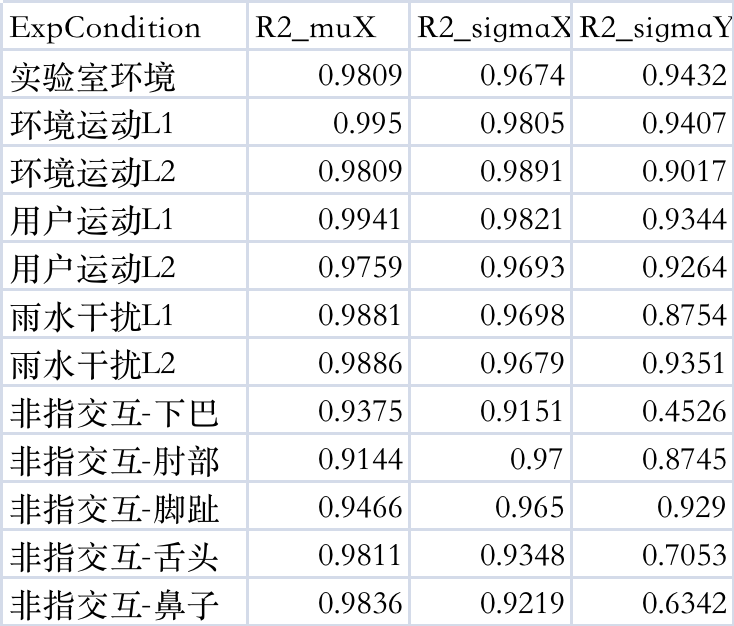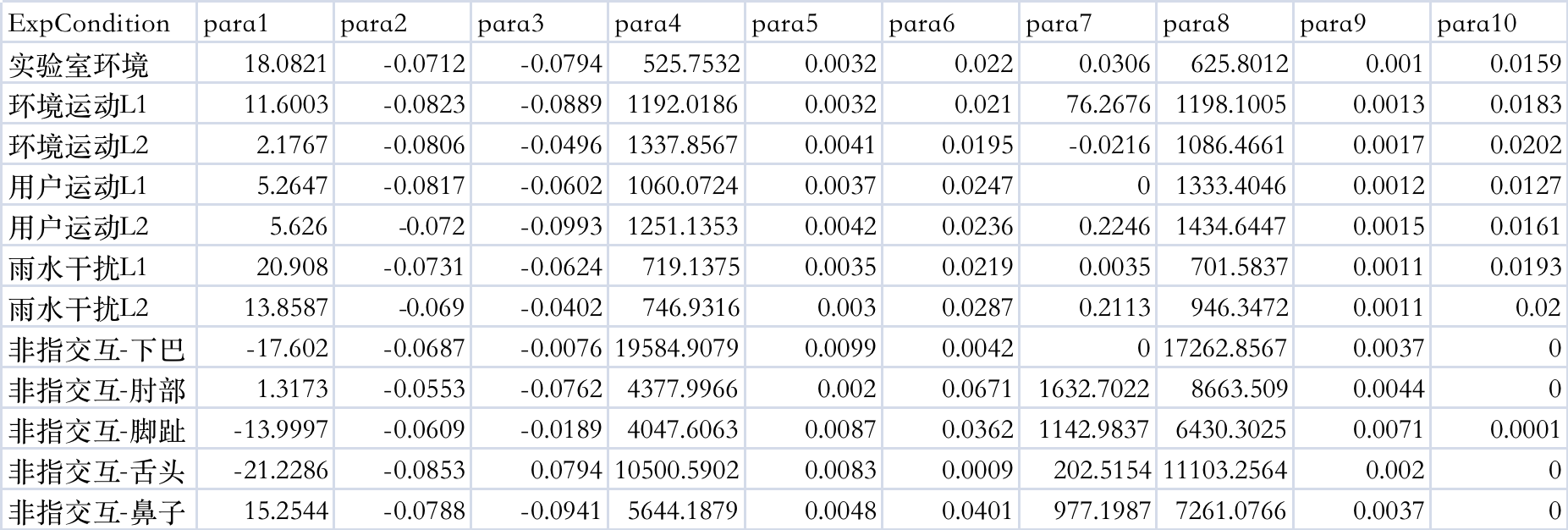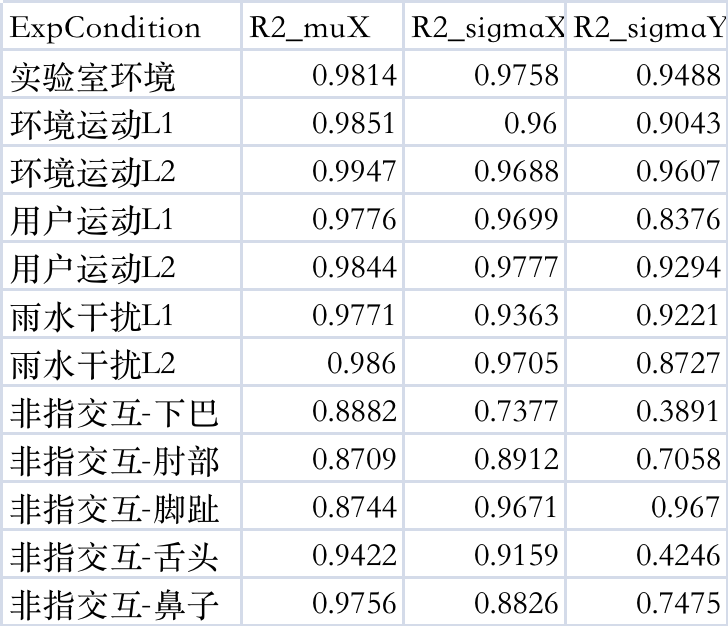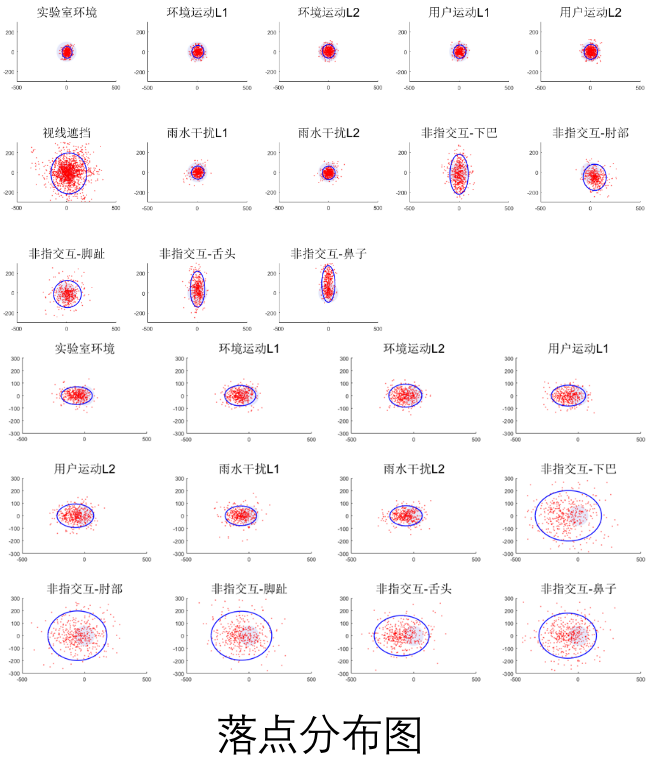Experimental Scenario Description
Experimental Scenario Description
Equipment
The experimental equipment consists of two devices, a mobile phone and a tablet.The mobile phone model is Huawei Mate40 pro with a screen resolution of 2772x1344, a physical screen size of 6.76 inches, and a screen pixel density(PPl) of 456 PPI. The tablet model is Honor V7Pro with a screen resolution of2560x1600, a physical screen size of 11 inches, and a screen pixel density (PPI) of 276 PPI.
Participants
The participants were recruited from Beijing Jiaotong University and consisted of 80 students (57 males, 23 females) with an age range of 18-32 years (mean =21.9, standard deviation = 2.8). Each participant was paid ¥500.
Task
Participants were asked to perform a mobile target selection task, which was conducted as follows: At the beginning of each trial, a circular target of a certain size appeared at a random location on the screen. After the target appeared, it moved in a fixed direction at a fixed speed. If the target touched the edge of the screen, it would reflect according to the principle of mirror reflection without losing speed. They were asked to click on the target as quickly and accurately as possible using their fingers. Each participant had only one chance to click on the target in each trial, and the system recorded the data regardless of whether the click was successful or not.
The experiment includes two basic task variables:
- Target size There are four levels of target size: 120px, 160px, 200px, and 240px. On mobile devices, the physical sizes of the four levels are 6.68mm, 8.91mm, 11.14mm, and 13.37mm respectively. On tablets, the physical sizes of the four levels are 11.04mm,14.72mm,18.41mm,and 22.09mm respectively.
- Target speed There are four levels of target speed: 300px/s, 600px/s, 900px/s, and1200px/s. On mobile devices, the physical speeds of the four levels are 16.71mm/s, 33.42mm/s, 50.13mm/s, and 66.84mm/s respectively. On tablets, the physicalspeeds of the four levels are 27.61mm/s, 55.22mm/s, 82.83mm/s, and 110.43mm/s respectively.
In addition to the two basic task variables, the experiment also includes thefollowing six environmental variables:
Laboratory Environment
The participants sit on an adjustable chair in front of a table. When using a mobile device, the participants are asked to hold the device with their non-dominant hand, with the screen facing them, and complete the target selection task with their dominant hand. When using a tablet, the device is placed flat on the table in front of the participants, and they are asked to complete the target selection task with their dominant hand. The participants’hands should be supported by the table, and the chair can be adjusted to ensure comfort during experiment.

Environmental Motion
The environmental motion device uses a bicycle to simulate different road surfaces. The participants sit on the back seat of the bicycle, and an assistant rides the bicycle on relatively flat and bumpy surfaces with speed ranging from 8 to 20km/h. The participants hold the testing equipment, such as mobile devices and tablets, with a leather loop fixed to their left hand. The level of environmental motion is simulated by the different terrains of the road. The participants areasked to hold the device with their non-dominant hand, with the screen facing them, and complete the target selection task with their dominant hand.

User Motion
The participants simulate user by jogging, fast walking (6 km/h), and running(8-10 km/h). During the motion, the participants are asked to hold the testing equipment, such as mobile devices and, with a leather loop fixed to their non-dominant hand and complete the target selection task by touching the screen with their dominant hand.
Fast walking

Running

Non-finger touch
The participants sit on an adjustable chair indoors, and themobile device or tablet is placed on the table or the ground in front of them. Toensure hygiene and safety, the device is disinfected and the screen is covered with a sanitary film before being used by different participants or different parts of the body. The participants complete the target selection task by touching the screen with different body parts such as tongue, nose, chin, elbow, and toes.
Tongue touch: The participants sit on the chair, hold the testing equipment with their non-dominant hand, and use their tongue to touch the screen after moving the device with their head to determine the target position.

Nose touch: The participants sit on the chair, hold the testing equipment with their non-dominant hand, and use their nose to touch the screen after moving the device with their head to determine the target position.

Chin touch: The participants sit on the chair, hold the testing equipment with their non-dominant hand, and use their chin to touch the screen after moving the device with their head to determine the target position.

Elbow touch: The participants sit on the chair and roll up their sleeves to expose their elbows. They hold the testing equipment with their non-dominant hand anduse their dominant elbow to touch the screen after moving the device to determine the target position.

Toe touch: The testing device is placed on the ground. The participants sit on thechair and take off their shoes and socks. They move their legs to determine the target position and use their toes to touch the screen to complete the target selection task.

Water droplets
The participants hold the mobile device or tablet with their non-dominant hand, and an assistant sprays water droplets in front of the screen using a spray device. The size of the water droplets is controlled by the number of sprays, and different amounts of water droplets will result in different sizes on the screen. Generally, small water droplets are sprayed 5 times (about 3mL), and large water droplets are sprayed 10 times (about 6mL).
Small water droplet touch: After the screen is sprayed with small water droplets, the participants use their dominant hand to touch the target and complete the target selection task.

Large water droplet touch: After the screen is sprayed with large water droplets,the participants use their dominant hand to touch the target and complete the target selection task. lf the water droplets affect the touch, the participants can wipe the screen with their fingers.

Visual obstruction
The participants sit on an adjustable chair indoors, and the mobile device ortablet is placed on the table in front of them. After completing one click, anassistant obscures the screen with a piece of paper. The participants then complete the target selection task again under visual obstruction, and areprompted by sound if the target is not selected. This process is repeated severatimes to complete the visual obstruction test.

Data recording:
User lD, age, gender, experimental environment, experimental conditions,experimental paradigm, target size, target movement speed, target sequencenumber, direction of target movement when clicked, position of target whenclicked, landing position when clicked, time to complete the task, time of click.
Data Volume
Mobile Target Selection Task
The experiment includes 12 experimental conditions,namely: laboratory environment, environmental motion level 1 (slight shaking)environmental motion level 2 (large shaking), user motion level 1 (slow), usermotion level 2 (fast), tongue interaction, nose-tip interaction, chin interaction elbow interaction, toe interaction, rainwater interference level 1 (small waterstains), and rainwater interference level 2 (large water stains). There are 4 levels oftarget size (120px, 160px, 200px, 240px), and 4 levels of target speed (300px/s,600px/s, 900px/s, 1200px/s), which combine to form 4×4=16 target conditions.There are 12 selection tasks for each target condition, so each experimentalcondition has a total of 4×4×12=192 tests. Therefore, the total data volume required for the mobile target selection experiment on both platforms is 12×192×40×2=184,320, and the actual data volume collected is 184,128.
The static target selection task
The experiment includes 13 experimental conditions, which not only include the 12 experimental conditions of the mobile target selection experiment, but also add the experimental condition of visual obstruction. Thereare 4 levels of target size (120px, 160px, 200px, 240px), and the target speed is 0px/s, which combine to form 4 target conditions. There are 12 selection tasks foreach target condition, so each experimental condition has a total of 4×12=48tests. In the target obstruction experimental condition, there are 4 target positions, so there are a total of 4×4×12=192 tests. Therefore, the total data volume required for the static target selection experiment on both platforms is(12×48+192)×80=61,440, and the actual data volume collected is 62,304
Data Preview
Fild Explanation:
| number | explanation |
|---|---|
| A | Target size (unit px) |
| B | Movement speed (unit: px/s) |
| C | Select number |
| D | Target x-axis coordinates |
| E | Target y-axis coordinates |
| F | Target direction angle |
| G | Click on the x-axis coordinates |
| H | Click on the y-axis coordinates |
| I | Click interval (two before and after) |
| J | Time stamp |
DataSet:
- Dataset.zip(Click to download)
Code
Implementation Platform
matlab R2016a
Run Method
- Place the code and dataset in the same directory
- Run the
MainCode.mto start the program
Functionality
The code includes dataset reading, three Gaussian model fitting, model fitting degree saving, model parameter saving, and landing point visualization implementation.
Functionality of Functions
- FitModel function
Used to fit the three Gaussian model, with the landing point data as input and themodel fitting degree and model parameters as output.
- model_muX、model_muY、model_sigmaX、model_sigmaY functions
Implementation of the calculation formula of the three Gaussian model
- outliertag function
Used to filter out outliers.
- rsquare function
Used to calculate the model fitting degree R2
Code Files
- Code.zip(Click to download)
Fitting Results and Model Parameters
pad platform
three Gaussian model parameters for the pad platform

Model fit for the pad platform

phone platform
three Gaussian model parameters for the phone platform

Model fit for the phone platform

整体落点分布图
